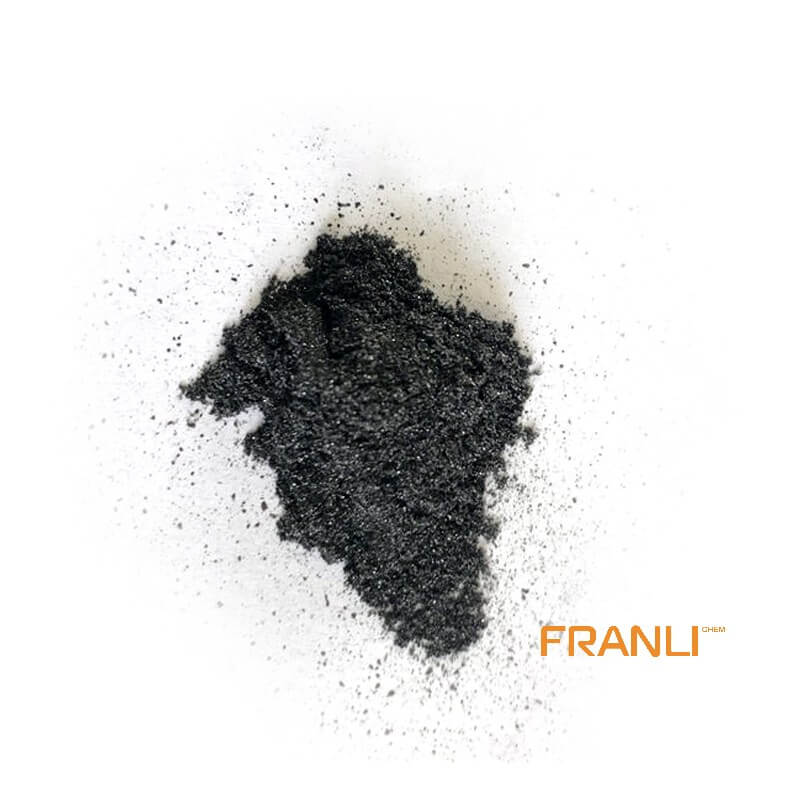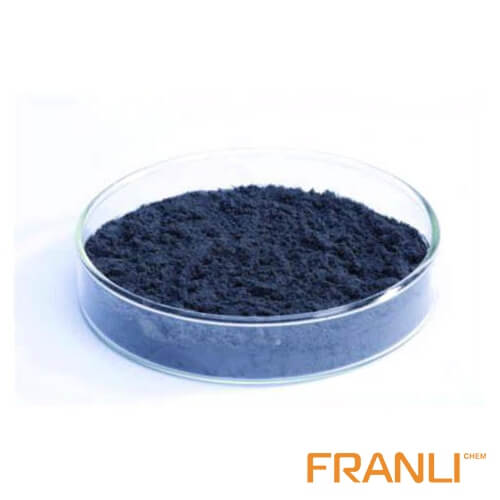


Expandable Graphite
Size
0.50mm or 0.106mm, etc
Package
25 kg small bags into ton bags
Origin
China
Features
Preservative/Electrical and thermal conductivity, etc.
Application
Fireproof sealing element, flame retardant, refractory brick, etc.
Expandable graphite crystal is a typical layered carbon material. Other heterogeneous particles such as atoms, molecules, ions, and even atomic clusters are inserted into the interlayer of crystalline graphite by physical or chemical methods to form a new layered compound, which is called graphite interlayer compound, namely expandable graphite.
Request a quoteExpandable graphite means that under appropriate conditions, various chemical substances such as acids, alkali metals, salts, etc. can be inserted between the graphite layers, and combined with carbon atoms to form a new chemical phase – Graphite Intercalation on Compounds, referred to as GIC), this graphite intercalation compound is expandable graphite. When this interlayer compound is heated to an appropriate temperature, it can be rapidly decomposed in an instant, producing a large amount of gas, which expands the graphite into a new worm-like substance, namely expanded graphite.

Expandable graphite can expand rapidly when heated at high temperatures, and the expansion ratio is as high as tens of times to hundreds of times or even thousands of times. , ranging in size from a few tenths of a millimeter to a few millimeters, with a large number of unique network-like microporous structures inside, known as expanded graphite or graphite worms. In addition to the excellent properties of natural graphite such as cold and heat resistance, corrosion resistance, and self-lubrication, expanded graphite also has the characteristics of softness, compression resilience, adsorption, ecological environment coordination, biocompatibility, and radiation resistance than natural graphite does not have.
Expandable graphite and its expanded graphite can be used in steel, metallurgy, petroleum, chemical machinery, medical, aerospace, atomic energy, and other sectors, and have a wide range of applications.
The methods for preparing expandable graphite include chemical oxidation method, electrochemical method, gas-phase diffusion method (dual-chamber method), mixed liquid phase method, melting method, pressurization method, explosion method, catalyst method, photochemical method, etc. Which chemical oxidation method And the electrochemical method is the most commonly used preparation method. The electrochemical method has attracted much attention in recent years due to its advantages of low environmental pollution, low cost, large processing capacity, and recyclable acid solution. Other synthesis methods have their own advantages and disadvantages, and the synthesis objects are not the same, so they are rarely used.

Chemical oxidation method: The chemical oxidation method is a traditional method for preparing expandable graphite. In this method, natural flake graphite is evenly mixed with an appropriate amount of oxidant and intercalating agent, and a certain temperature is controlled. That is, expandable graphite is obtained. There are many types of oxidants. Generally, the oxidants used are solid oxidants (such as potassium permanganate, potassium dichromate, chromium trioxide, potassium chlorate, etc.), or some oxidizing liquid oxidants (such as hydrogen peroxide, nitric acid, etc.). Through recent research, it has been found that the main oxidant commonly used in the preparation of expandable graphite is potassium permanganate. Most of the intercalating agents are acids. In recent years, researchers have mainly used sulfuric acid, nitric acid, phosphoric acid, perchloric acid, mixed acid, and glacial acetic acid.
Electrochemical method: The electrochemical method is to form a composite anode with graphite and metal materials (stainless steel material, platinum plate, lead plate, titanium plate, etc.) under a constant current, using the aqueous solution of the insert as the electrolyte, and insert it into the electrolyte. The metal material is used as the cathode to form a closed loop, or the graphite is suspended in the electrolyte, and the cathode and anode plates are inserted into the electrolyte at the same time, and anodization is performed by energizing the two electrodes. In recent years, the electrochemical method has gradually become the preferred method for the preparation of expandable graphite by many enterprises due to its many advantages.



